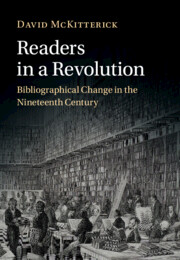Book contents
- Readers in a Revolution
- Readers in a Revolution
- Copyright page
- Dedication
- Contents
- Illustrations
- Abbreviations
- Prologue
- 1 Introduction
- 2 Re-Shaping the World
- 3 Books in Abundance
- 4 Celebrating Print
- Libraries
- Trading and Collecting
- Books in Detail
- Books on Show
- Another Generation
- Conclusion
- 19 Then and Now
- Notes
- Select Bibliography
- Index
19 - Then and Now
from Conclusion
Published online by Cambridge University Press: 06 June 2022
- Readers in a Revolution
- Readers in a Revolution
- Copyright page
- Dedication
- Contents
- Illustrations
- Abbreviations
- Prologue
- 1 Introduction
- 2 Re-Shaping the World
- 3 Books in Abundance
- 4 Celebrating Print
- Libraries
- Trading and Collecting
- Books in Detail
- Books on Show
- Another Generation
- Conclusion
- 19 Then and Now
- Notes
- Select Bibliography
- Index
Summary
Conclusion. How do we own the past? If reading, and thereby a measure of understanding, in some sense includes ownership, then how far does ownership encompass access? What are the means by which we understand the past? Such questions, often heard in other disciplines, arguing over repatriation and restitution, deserve to be asked much more insistently about how we read books and, now, about digital environments. We choose what to remember, what to preserve and how to see it; and therefore, by implication, what to discard, what to neglect, and thus eventually to forget.
- Type
- Chapter
- Information
- Readers in a RevolutionBibliographical Change in the Nineteenth Century, pp. 311 - 320Publisher: Cambridge University PressPrint publication year: 2022

